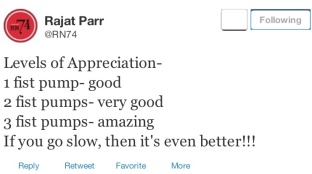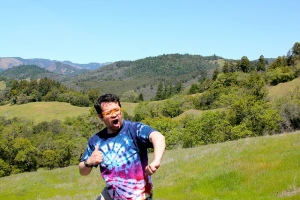There are few things I dislike more in the wine world than the infatuation with tasting notes. It seems like every aspiring wine fan wants to sniff, swirl, taste their way to identifying “hints of cassis,” “leather,” or “barnyard” in their glass. Take for example this article in the New York Times, where the writer (a self-described wine novice) notes that by the end of his time in Napa, he was “sensing cherry, and a note of cinnamon” in his wine and described that as “progress.”
My dislike of tasting notes isn’t just limited to the obscure references to “stewed figs,” which my friend David White excoriated in a recent post. It’s the overall fascination new wine drinkers have with the parlor game of spewing out descriptors every time they pick up a glass of wine.
My advice to folks interested in learning more about wine: stop glorifying the need to identify what part of the produce section you can identify in a wine, and focus on identifying and seeking out wines that excite you.
Now, I don’t want to throw out the baby with the bath water. I can see why wine aficionados use tasting notes to differentiate between wines so they can remember what they had or to be able to exchange ideas about different wines, different regions, etc. I even understand why avid cooks might find these types of tasting notes helpful so they can be thoughtful about food and wine pairings. So yes –there’s a time and a place for the traditional tasting note.
But even the most experienced drinker, even the wine professional, when drinking wine, has an emotional reaction to it, and that is more relevant in some ways than a lengthy list of descriptors.
Before I delve into that theory, I want to point out why I emphasized “drinking” in the last paragraph. My fourth grade teacher was fond of saying, “There’s a time for work, and there’s a time for play.” Tasting is work. It involves sipping and analyzing. Drinking is different. Drinking is play. It’s pleasure. It’s sitting back, pulling the cork, and maybe pulling a few more just ‘cause. And, while I have absolutely no data to back up this claim, I would venture to guess that the vast majority of wines consumed (whether it be your supermarket wine or the trophy bottles) are drunk, not tasted.
So let’s get back to the emotional reaction to wine. Even the most studied wine professional enjoys wine at a very base, emotional level. You can see it in their facial expression when they take a sip. You might even notice some certain head movements, a slight lifting of the chin or raising of an eyebrow, to signal that the wine surprised them in some way.
The more animated drinkers might have a more obvious physical reaction to wine. During a trip through France in 2012, Duncan Meyers and Nathan Roberts from Arnot-Roberts picked up the “side fist pump” as a signal for wines they enjoyed. This sign language caught on in certain circles.
Hardy Wallace, who tends to wear his emotions on his sleeve, has a certain little chicken wing thing he does when he has an exciting wine, which sometimes evolves into a full-out running man/cabbage patch hybrid.
(photo from DirtySouth Wine Flickr Page).
Peoples’ reaction to great wine can sometimes be surprising. Earlier this year, I had a group of friends over for dinner, all folks involved in the production or sale of wine. There were at least two bottles per person open on the table by the time we moved on to the main course. Let’s just say we were all “happy,” conversation was flowing, and the decibel level rising. My friend Max breaks out a bottle of 1990 Peter Lauer Riesling Sekt, and we each pour ourselves out a glass, raise a toast, take a sip, and fall silent. The wine was that spectacular. There were no words.
We all have our little thing we do that’s just a pure, emotional reaction to something we enjoy. Embrace that. Make that your tasting note. Focus on identifying and seeking out what wines bring that out in you. That (more than the number or creativity of the descriptors you can spit out) shows you truly can appreciate wine.



Pingback: Terroirist: A Daily Wine Blog » Daily Wine News: Taste Less
November 5, 2013 at 9:23 am
Nice…
I’m all about tastings as events to connect people wine and each other and at best with the winemakers. That’s what I’m trying to do with http://www.thelocalsip.
I’ve never published a tasting notes. Don’t use any app to do so. Managed to muddle few a hundred or so posts without them. Successfully or not is not clear.
So–we agree! Tasting and tasting notes share a word, not much more.
November 5, 2013 at 10:30 am
Why would you need an app to publish tasting notes?
November 6, 2013 at 8:42 am
Agree with you Arnold that wine (tasted or drunk)is best if shared with others!
November 5, 2013 at 2:13 pm
I love what you said about emotions. It’s why I’ve never used numbers as a scale for my wine. I use happy faces at wine-girl.net. I’ve always said wine is based on how we feel.
November 6, 2013 at 8:41 am
Thanks, Michelle! Glad you enjoyed the post.
November 6, 2013 at 9:52 pm
bravo – best tasting note is a smile & an empty glass thereafter.
November 7, 2013 at 8:42 pm
Good read. I’m going to try adding some emotion to my “tasting notes”.
November 9, 2013 at 9:24 pm
When I love a wine, I just laugh out loud – even if I’m just standing or sitting by myself. Most recently? De Moor Aligote Plantation 1902. Sooooo good. Ha!
Pingback: Empty Boxes | grapes of cath